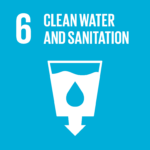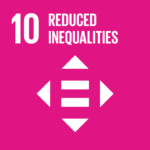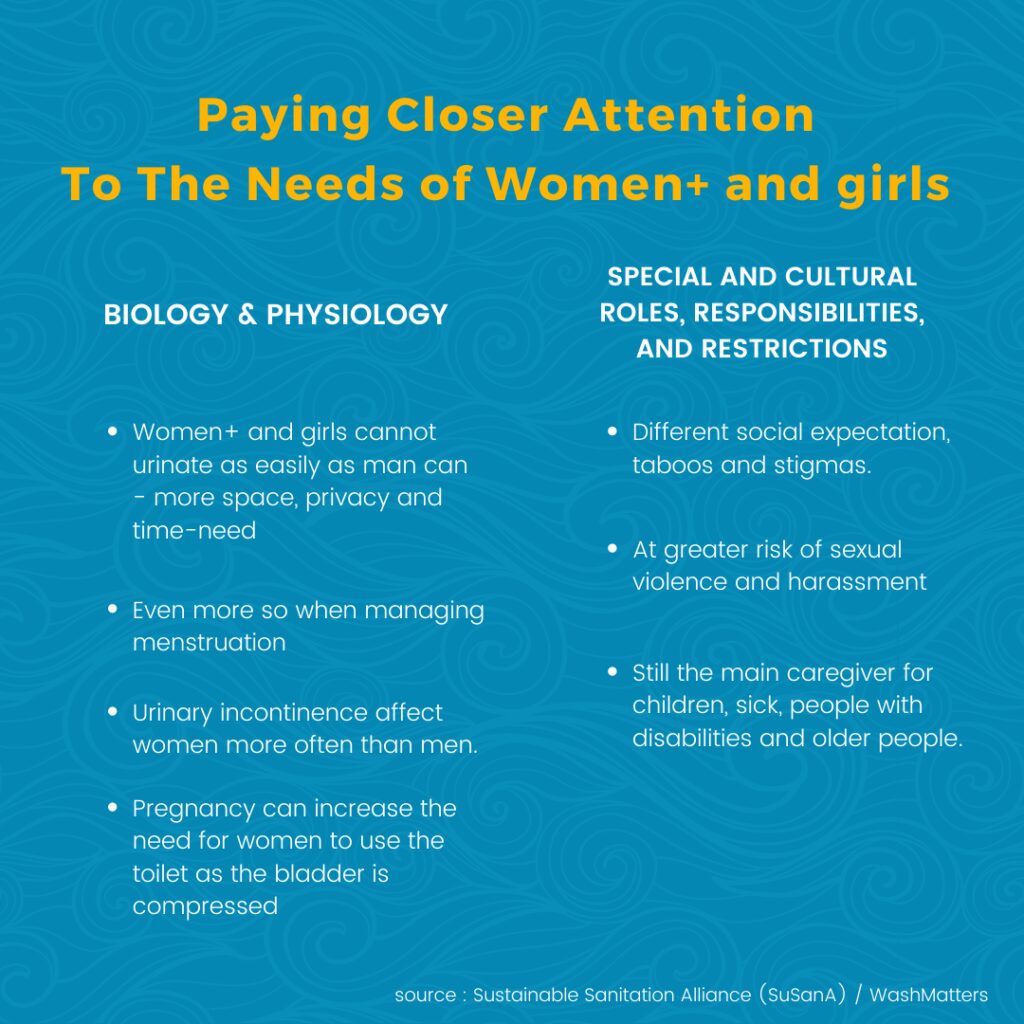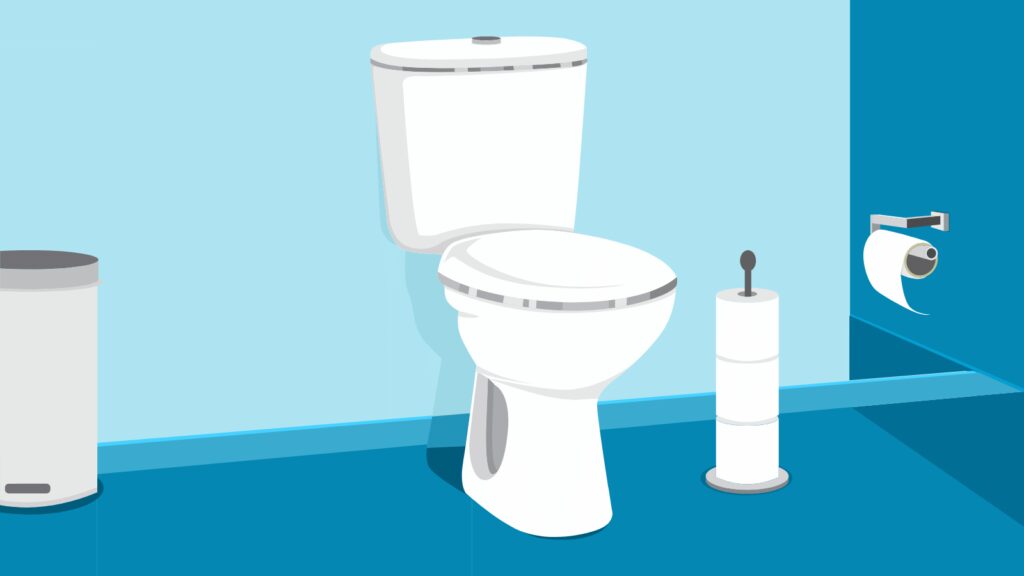What would a female-friendly toilet looks like ?
1 in 3 people across the world doesn’t have a decent toilet of their own. It’s not just a question of lacking a household toilet. It is also where they exist, and whether these facilities often don’t meet the unique sanitation needs of their users, such as the physiological, physiological, social, cultural, and power difference that exists across the sexes.
Simply put, female+’s sanitation needs are rarely accounted for during the design and construction of the toilet and sanitation facilities, possibly because the under-representation of people who menstruate in toilet construction, design and engineering.
RELEVANT SUSTAINABLE GOALS




Female-Friendly Toilets : Design Improvement
Female+, for instance, have different sanitation needs and requirements from a male. During menstruation, pregnancy, menopause, and for privacy in general. These needs are related to physiology, reproductive health processes, prevalent social norms, and heightened vulnerability to violence.
Female-friendly means public and community toilets that are safe and private, meet menstrual hygiene and other hygiene requirements. It is also need to be accessible to all, including people with disabilities, well-maintained, affordable, and available when needed
Anonymous

A design guide called “Female-Friendly Public And Community Toilets” explains what features are essential and desirable in a bathroom facility for women. The guide, released in 2018, was authored by an international team of WASH specialists from nonprofit groups and academia (WASH stands for “water, sanitation and hygiene management”). The design of female-friendly toilets enables women+ and girls to feel confident, safe, and dignified while managing their daily sanitation needs. This includes adopting specific design measures which account for their menstrual hygiene, personal safety, and dignity-related needs.

Ultimately, an enhanced dialogue must take place among designers, policy makers, water, sanitation, and hygiene (WASH) practitioners, and other relevant actors, in addition to the target users themselves. By the end of the day, what we need are inclusive, supporting toilets for all bodies.
Do me a favour, check if existing your toilets are female-friendly. Will ya ?
Writer’s note : You may have noticed that I added (+) to word “female”. The (+) is designed to be inclusive of others who are underrepresented or face gender-biases, like non-binary people and menstruators.
Also Read :
Period Waste : Not Just A Girl’s Problem


